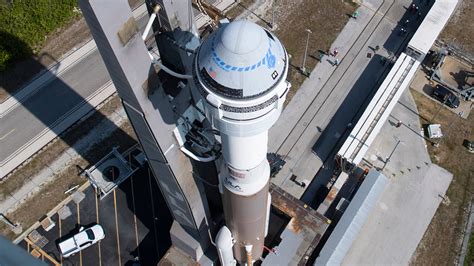NASA’s recent decision to delay the return of the Starliner capsule has created waves in the space community. The indefinite postponement to an unspecified time in July has drawn scrutiny and criticism, with some arguing that the term ‘indefinitely’ is misleading. Indeed, this seems like a noteworthy moment to reflect on the broader implications for NASA’s strategy and the future of human spaceflight.
Discussion among enthusiasts reveals frustration and a keen desire for clarity. For instance, the Starliner is rated for only a 45-day stay in space, and questions arise about the ramifications if these days elapse. This brings to mind how critical precise engineering and timing are in missions. Engineers and mission planners must ensure that every component functions seamlessly, including the capsule’s propulsion system. However, the capsule is reportedly leaking helium, an essential component for thrusters. Such issues underline the importance of thorough testing and verification processes before and during missions. Consistency and reliability are non-negotiable when human lives are at stake.
One of the proposed contingency plans includes using a Crew Dragon capsule from SpaceX to retrieve stranded astronauts. The concept of a ‘space lifeboat’ has been floated, where a secondary spacecraft would be on standby. This is a fascinating development as it highlights the role of redundancy in space missions. The potential reliance on SpaceX’s Crew Dragon could symbolize a shift in space policy, where collaborations and backup plans become integral to mission design. SpaceX’s rapid cadence of launches positions them well to provide such support, showcasing their operational flexibility and robustness.
Another perspective raised in the discussions is the likelihood of using the Starliner capsule to bring back space station garbage if it’s deemed unfit for human return. Such use cases stress the need for adaptable and versatile craft designs. The Starliner’s predicament also invites comparisons to historical rescue operations, like the audacious plan once pondered for the Space Shuttle Columbia. It evokes the question of how prepared we are to deal with unforeseen in-space failures. Agencies must look at these scenarios not just as technical challenges but also as policy and logistical hurdles that require swift, effective response frameworks.
The repetitive delays and technical hiccups with Starliner are not isolated incidents but point to broader systemic issues. There’s a prevailing notion that NASA’s manned space program has shifted focus more on budgetary allocations rather than mission efficiency and safety. This was audibly echoed with remarks on outdated and poorly integrated technologies. Perhaps, it is time for NASA and its contractors to revisit their project management strategies and prioritize engineering excellence over short-term financial considerations. In a parallel development, private companies like SpaceX might push the envelope, prompting a much-needed competitive edge within space exploration frameworks.
In conclusion, the Starliner delays are a microcosm of the challenges facing modern space missions. They underscore the vital importance of detailed planning, robust engineering, and the ability to adapt swiftly to new developments. As space agencies continue to push the boundaries, collaboration and innovation will be key to overcoming these hurdles. The episode serves as a mirror to the current state of our space readiness and calls for introspection and proactive measures to ensure the safety and success of future missions.


Leave a Reply